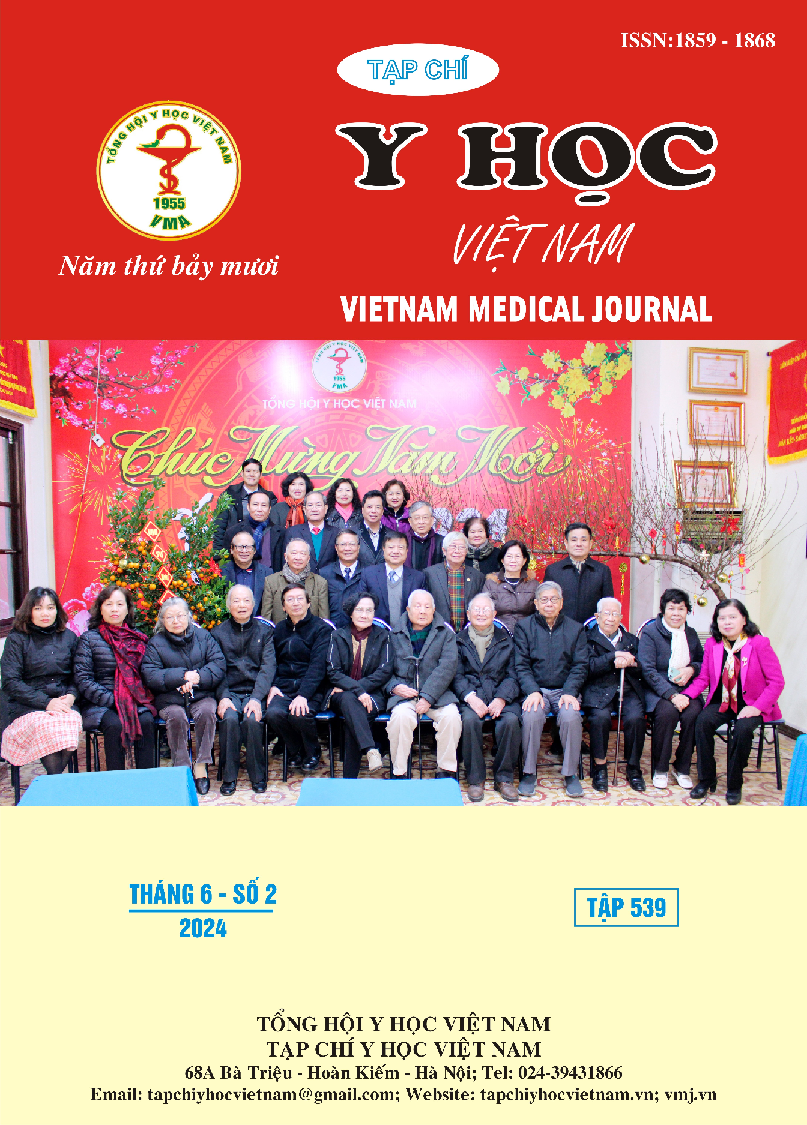PARACLINICAL CHARACTERISTICS OF ASTHMA PATIENTS AT THE INTERNAL MEDICINE DEPARTMENT 1 OF SAINT PAUL GENERAL HOSPITAL, NOVEMBER-DECEMBER 2020
Main Article Content
Abstract
Objective: Describing the paraclinical characteristics of asthma patients at the internal medicine department 1, Saint Paul general hospital in November - December 2020. Method: Cross-sectional descriptive study. Research results: The majority of asthma patients were over 70 years old (40%), male (58%), with a family history of asthma (70%), no history of allergies (62%), and no childhood asthma (76%). Most patients had normal hemoglobin levels (90%), normal white blood cell (94%), and a normal neutrophil ratio (96%). All patients had eosinophil percentages within normal limits. The majority of patients had normal lung X-Ray images (78%). 12% of patients showed increased lung brightness and dark hilum, 6% of patients had signs of pneumonia. 100% of patients aged 20-60 had an FEV1 index above 80%. The majority of patients over 70 had an FEV1 index between 60% and 80% (85%). Conclusion: Most asthma patients, outside of asthma attacks, exhibited normal blood counts and lung function imaging. 100% of patients aged 20-60 had an fev1 index above 80%. Most patients over the age of 70 had an FEV1 index between 60% and 80% (85%).
Article Details
References
2. Trường Đại học Y Hà Nội (2020). Bệnh học nội khoa tập 1. Nhà xuất bản y học
3. Centers for Disease Control and Prevention (2012), “Work-related asthma - 38 and district of olumbia, 2006- 2009”, MMWR Morb Mortal Wkly Rep, 61(20), pp. 375-8.
4. Chaari N, Amri C, Khalfallah T et al (2009), “Rhinitis and asthma related to cotton dust exposure in apprentices in theclothing industry”, Rev Mal Respir, 26(1), pp:29-36
5. Dương Quý Sỹ (2016), Sổ tay hướng dẫn xử trí và dự phòng hen phế quản, GINA
6. Hoang Thi Lam, EvaRönmark, Nguyen Van Tuong et al (2011), “Increase in asthma and a high prevalence of bronchitis: Results from a population study among adults in urban and rural Vietnam”, Respiratory Medicine, Volume 105, Issue 2, February 2011, Pages 177-185.
7. Nguyễn Năng An (2009), Hen phế quản, mấy vấn đề thời sự về lý luận, thực hành, Nhà xuất bản Y học
8. Phan Quang Đoàn (2011), “Một số nguyên nhân hay gặp gây Hen phế quản”, Tạp chí Y học thực hành, số 9, tr 44- 46.


